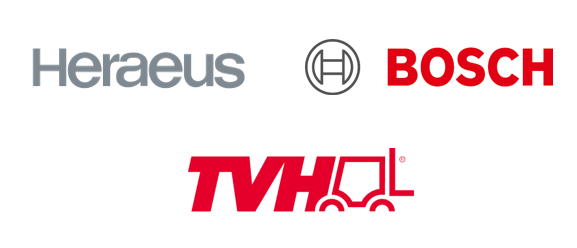Market Overview:
"The global catamaran market was valued at US$ 2.2 billion in 2024 and is expected to register a CAGR of 5.8% over the forecast period and reach US$ 3.7 billion in 2033."
|
Report Attributes |
Details |
|
Base Year |
2024 |
|
Forecast Years |
2025-2033 |
|
Historical Years |
2021-2024 |
|
Catamaran Market Growth Rate (2025-2033) |
5.8% |
A catamaran is a type of boat or watercraft that features two parallel hulls, or pontoons, that are usually of equal size. These hulls are connected by a deck or a platform. Catamarans can vary in size from small recreational boats to large, luxurious vessels used for transportation or cruising. The design of catamarans offers several advantages over conventional single-hull boats, such as increased stability, reduced drag in the water, and potentially higher speeds due to lighter weight-to-surface area ratio of catamaran.
Catamaran provides stability on water due to the twin hull design, enhancing passenger comfort and reducing seasickness. It is widely known for offering a safe and enjoyable maritime experience, appealing to both leisure and commercial users. Catamaran is used in passenger ferries, luxury yachts, and even military vessels due to its efficiency and ability to navigate shallow waters. Demand for catamaran is driven by its fuel efficiency, spacious layouts, eco-friendliness, and versatility, making it as most preferred choice for maritime enthusiasts and similar industries.
The global catamaran market is registering steady revenue growth driven by rising tourism, water-based recreational activities, and maritime transport needs. Catamaran offers comfort, stability, and efficient maneuverability, making it popular choices for leisure cruises, fishing, and coastal transportation. Advancements in catamaran design and propulsion technology enhances performance and sustainability. Government initiatives promoting eco-friendly transportation and maritime safety further influence market revenue growth. Compliance with stringent environmental regulations and high focus on innovative services contribute to revenue growth of the global catamaran market.
Catamaran Market Trends and Drivers:
Rising Marine Tourism: Increasing popularity of marine tourism, including luxury cruising and adventure trips, is boosting demand for catamarans. Spacious layouts, stability, and comfort make these boats attractive option for travelers seeking unique and enjoyable maritime experiences.
Eco-Friendly Design: Global shift toward sustainability is driving revenue growth of the catamaran market. These vessels are known for fuel efficiency and lower carbon footprint compared to conventional monohulls, aligning with environmental concerns and driving demand from eco-conscious consumers.
Versatility and Customization: Catamarans offer versatile configurations for various applications, from leisure to commercial purposes. Ability to customize interiors, layouts, and amenities caters to diverse customer preferences, making catamarans an appealing choice for both personal use and business ventures.
Innovations in Design and Technology: Ongoing advancements in catamaran design, materials, and propulsion systems contribute to enhanced performance, stability, and safety. Innovations in hydrodynamics and aerodynamics improve efficiency and maneuverability, further driving market revenue growth.
Expansion of Maritime Transport: Catamarans are used beyond leisure as efficient coastal and inter-island transport vessels. These boats aid in addressing the need for reliable and cost-effective maritime transportation solutions, especially in regions with challenging sea conditions or shallow waters, positively impacting market revenue growth.
Catamaran Market Restraining Factors:
High Initial Investment: Cost of purchasing and maintaining a catamaran can be substantial, deterring potential buyers and limiting market access. The upfront expenses for acquisition, maintenance, docking, and equipment can create a significant barrier, particularly for individual consumers.
Limited Docking Infrastructure: Availability of suitable docking and maintenance facilities for catamarans can be limited in certain regions. Insufficient infrastructure can constrain the usage and convenience of catamarans, restricting potential growth in specific markets.
Navigational Restrictions: Catamarans, despite stability of these vessels, can be subject to navigational restrictions in certain waterways and areas with shallow depths or narrow passages. These limitations can curtail versatility and operational flexibility, impacting attractiveness for certain applications.
Maintenance and Repairs: Vessel’s dual hull design, contribute to stability; however, can increase complexity of maintenance and repairs. Need for upkeep of two hulls, intricate structural components, and specialized equipment requires skilled technicians and can result in higher maintenance costs and downtime.
Limited Awareness: In some markets, lack of awareness and understanding about catamarans can hinder market revenue growth. Raising awareness regarding potential buyers about the benefits, features, and proper operation of catamarans is crucial for driving product adoption and market reach.
Catamaran Market Opportunities:
Rising Marine Tourism: Rising trend of marine tourism, including luxury cruises and island hopping, is opening avenues for catamaran operators to offer unique experiences. Stability, comfort, and spaciousness of catamarans align with preferences of leisure travelers, driving demand and revenue.
Emerging Markets: Developing economies with expanding middle-class populations are registering a rise in leisure activities. Catering to this demand with affordable and well-equipped catamaran manufacturers can unlock new revenue streams by tapping in these emerging markets.
Corporate and Event Charters: Catamarans offer versatile event and corporate charter options, such as team-building activities, weddings, and private parties. Tailored experiences and luxury amenities can attract high-value bookings and increase revenue generation for global players.
Green Maritime Solutions: Growing emphasis on sustainability is creating opportunities for eco-friendly catamarans powered by alternative fuels or hybrid propulsion systems. Meeting the demand for green maritime solutions can position operators favorably and attract environmentally conscious customers.
Yacht Chartering: Spacious layouts and stability of catamarans, make these vessels desirable option for yacht chartering. Capitalizing on the trend of experiential travel, operators can offer personalized yacht experiences, contributing to increased revenue through luxury services.
Coastal and Island Transport: Catamarans are well-suited for coastal and inter-island transport due to efficiency and shallow draft. Catering to the ongoing demand for reliable and swift transportation in regions with complex coastlines can generate steady revenue for market players.
Collaborations and Innovation: Partnerships with hospitality providers, tour agencies, and event planners can create synergistic revenue streams. In addition, continuous innovation in design, technology, and amenities can attract repeat business and maintain market relevance.
Catamaran Market Segmentation:
By Type:
- Sailing Catamarans
- Power Catamarans
By Size:
- Small (Below 40 feet)
- Medium (40 to 60 feet)
- Large (Above 60 feet)
By End-Use:
- Leisure
- Commercial
By Application:
- Marine Tourism
- Water Sports
- Coastal Transport
- Others
Catamaran Market, By Region:
North America:
- United States
- Canada
Asia Pacific:
- China
- India
- Japan
- Australia & New Zealand
- Association of Southeast Asian Nations (ASEAN)
- Rest of Asia Pacific
Europe:
- Germany
- The U.K.
- France
- Spain
- Italy
- Russia
- Poland
- BENELUX (Belgium, the Netherlands, Luxembourg)
- NORDIC (Norway, Sweden, Finland, Denmark)
- Rest of Europe
Latin America:
- Brazil
- Mexico
- Argentina
- Rest of Latin America
The Middle East & Africa:
- Saudi Arabia
- United Arab Emirates
- South Africa
- Egypt
- Israel
- Rest of MEA (Middle East & Africa)
Regional analysis of the global catamaran market reveals key regions and countries with significant potential. North America leads in terms of market share with established luxury cruising and water sports. Europe registers a robust revenue growth driven by sustainability initiatives. Asia Pacific emerging economies drive demand for leisure and commercial purposes. Latin America registers steady revenue growth due to growing marine transport, while Middle East & Africa is focusing on luxury yachts. Market revenue growth is due to innovation, customization, and strategic collaborations, while challenges include high costs and limited infrastructure. Overall, the global catamaran market offers diverse opportunities amid evolving consumer preferences and regional dynamics.
Leading Companies in Catamaran Market & Competitive Landscape:
The global catamaran market competitive landscape is characterized by renowned players such as Lagoon Catamaran, Fountaine Pajot, and Sunreef Yachts. These industry leaders focus on innovation, design excellence, and customization to cater to diverse customer demands. Collaborations, mergers, and acquisitions are strategies to expand market presence. Regional players such as Leopard Catamarans contribute to market diversity. Intense rivalry is driven by advancements in hull design, propulsion systems, and eco-friendly features, driving continuous improvement. Overall, the competitive landscape underscores the industry's efforts to offering more advanced, innovative and sustainable catamaran solutions to global customer base.
Company List:
- Lagoon Catamaran
- Fountaine Pajot
- Sunreef Yachts
- Leopard Catamarans
- Robertson & Caine
- Catana Group
- Bali Catamarans
- Outremer Yachting
- Seawind Catamarans
- Privilege Marine
- Gunboat
- HH Catamarans
- Aquila Power Catamarans
- Neel Trimarans
- Nautitech Catamarans
Research Scope
|
Report Metric |
Report Details |
|
Catamaran Market size available for the years |
2021-2033 |
|
Base Year |
2024 |
|
Forecast Period |
2025-2033 |
|
Compound Annual Growth Rate (CAGR) |
5.8% |
|
Segment covered |
By Type, Size, End-Use, Application, and Region |
|
Regions Covered |
North America: The U.S. & Canada Europe: Germany, The U.K., France, Spain, Italy, Russia, Poland, BENELUX, NORDIC, & Rest of Europe Asia Pacific: China, India, Japan, Australia & New Zealand, ASEAN, & Rest of Asia Pacific Latin America: Brazil, Mexico, Argentina, & Rest of Latin America The Middle East & Africa: Saudi Arabia, United Arab Emirates, South Africa, Egypt, Israel, and Rest of MEA |
|
Fastest Growing Country in Europe |
Germany |
|
Largest Market |
North America |
|
Key Players |
Lagoon Catamaran, Fountaine Pajot, Sunreef Yachts, Leopard Catamarans, Robertson & Caine, Catana Group, Bali Catamarans, Outremer Yachting, Seawind Catamarans, Privilege Marine, Gunboat, HH Catamarans, Aquila Power Catamarans, Neel Trimarans, Nautitech Catamarans, and among others. |
Frequently Asked Question
What are the key factors driving revenue growth of the global catamaran market?
Revenue growth of the global catamaran market is driven by factors such as rising interest in marine tourism, growing appetite for luxury experiences, eco-friendly appeal of catamarans, versatile applications of these vessels in leisure and commercial sectors, and advancements in design and technology enhancing performance and comfort.
Which regions/countries register significantly high demand in the global catamaran market?
Regions such as North America, driven by its established marine tourism industry, Europe with its focus on sustainable travel, and Asia Pacific due to emerging leisure and transport demands, are prominent contributors to global catamaran demand. Coastal countries such as the United States, France, Australia, and Thailand exhibit high interest in catamaran experiences.
What are the key challenges faced by companies in the global catamaran market?
Companies in the global catamaran market face with challenges such as high initial costs impacting affordability, need for specialized infrastructure and docking facilities, regulatory compliance and safety standards, the complexity of maintenance and repairs, and market fragmentation affecting quality consistency.
What are the emerging trends observed in the global catamaran market?
Emerging trends observed in the global catamaran market include sustainable travel preferences driving demand for eco-friendly vessels, rise of personalized luxury experiences attracting affluent travelers, advancements in hull design and propulsion systems enhancing efficiency, expansion of chartering services for hassle-free catamaran experiences, and incorporation of wellness and relaxation offerings onboard.
How are government initiatives supporting revenue growth of the global catamaran market?
Government initiatives are supporting the global catamaran market revenue growth by encouraging sustainable tourism practices, promoting eco-friendly maritime solutions, investing in marine infrastructure and facilities, and incentivizing innovation and technology adoption. These initiatives create an environment conducive to catamaran operations, attracting both leisure and commercial users and driving market expansion and revenue growth.

